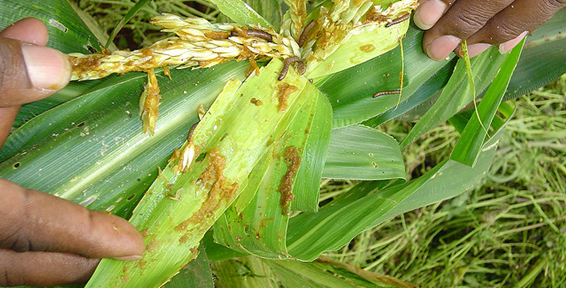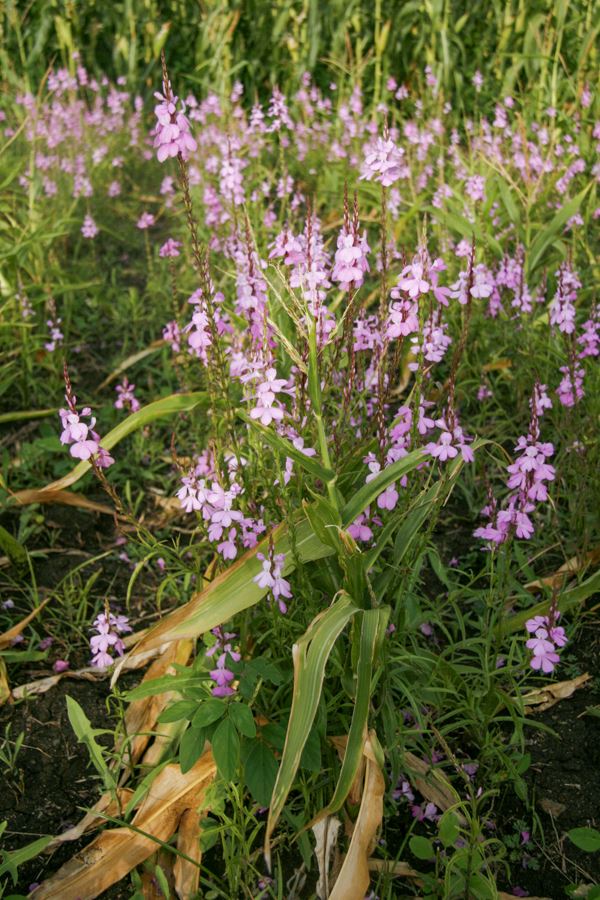Stemborers are one of the most destructive pests of cereal crops and can greatly reduce yields of maize and sorghum on smallholder farms. These pests can cause yield losses of 30 to 100% if they are not controlled. Control of stemborers by insecticides is very expensive for resource-poor farmers and can also be harmful to the environment.
Stemborers are the most important insect pests of maize in Africa, but they also attack other cereal crops such as sorghum, millet and sugarcane. In eastern Africa there are two species of stemborers which cause heavy damage to cereal crops: Busseola Jusca (Figure a) and Chilo partellus (Figure b).
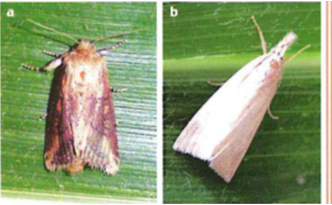
Busseola fusca is indigenous to Africa and is present in high- and mid-altitude areas (3500 ft [1077 m] above sea level and higher). Chilo partellus accidentally came to Africa from Asia in the 1930s. Chilo partellus is present in low- and mid-altitude areas (zero to 4000 ft [1230 m] above sea level).
Damage is caused by the worm-like larvae, which first feed on young leaves, but soon enter into the stems.
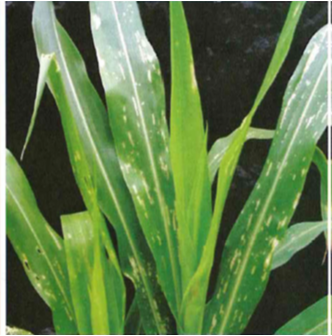
During the early stage of crop growth, the larvae may kill the growing points of the plant, resulting in deadheart.
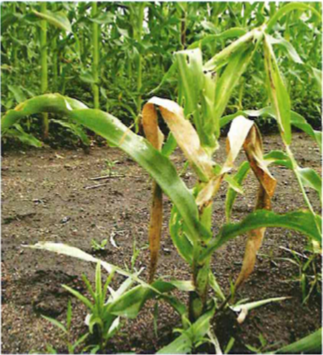
At a later stage of growth, the larvae make extensive tunnels inside the stem. This weakens the stalk so that it breaks and ‘lodges’ (falls over). Damage caused by stemborers averages 20 to 40% which means between 2-4 bags of maize are lost out of every 10 that could be harvested.
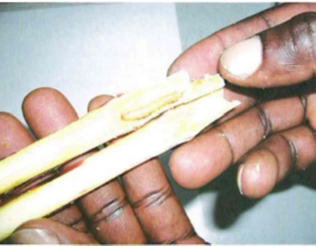
The adult moths of stemborers are seldom seen in farmers’ fields as they are inactive during daytime. They become active after sunset and lay their eggs during the night.
Adult moths lay their eggs on maize plants; after the larvae emerge, they feed on leaves for two to three days and then enter inside the maize stem. Busseola fusca lays its eggs between the stem and leaf sheath, whereas Chilo partellus lays its eggs on the leaf surface in the form of egg batches. After the larvae bore into the maize stems, they feed and grow within the stems for 2-3 weeks.
When the larvae are fully grown, they pupate and remain inside the maize stem. After 7- 14 days the adults emerge from the pupae and come out of the stem. They mate and lay eggs on the maize plants again and continue damaging the crop.
If you are a farmer or extension staff looking for practical advice on how to establish and manage a push-pull plot to control stemborers and striga weed download the handbook. It is expected that the information herein will enhance adoption of the technology and increase maize and livestock productivity while conserving the environment.
Available downloads
